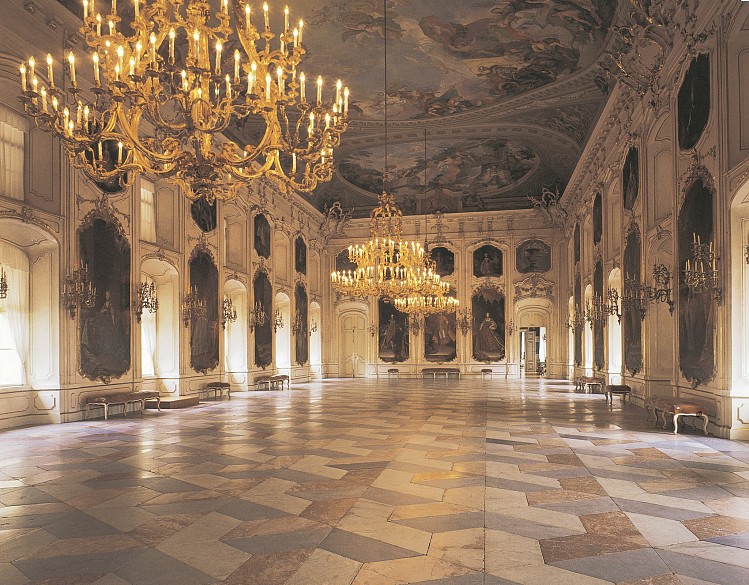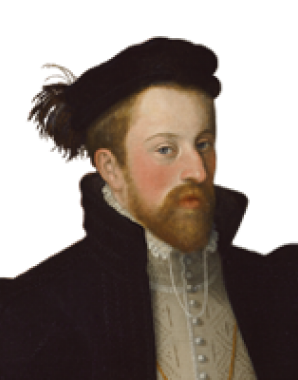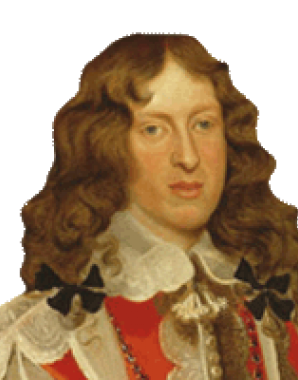Innsbruck – Residence with Alpine panorama
The acquisition of Tyrol in 1363 brought the Habsburgs a region of enormous strategic importance in the Alps. Especially in the fifteenth and sixteenth centuries, Innsbruck was a significant theatre of activity in Habsburg history, the reason why the dynasty has left conspicuous signs of its presence here.
The rich county of Tyrol was the domain in the late Middle Ages and early modern era of collateral lines of the House of Habsburg. Duke Frederick IV was the first Habsburg to reside permanently in Tyrol, making Innsbruck his royal residence in 1420. A ruler with the common touch, Frederick governed his land strictly at the expense of the nobility. His nickname ‘Friedl mit der leeren Tasche’ (Freddy Empty-Pockets) belied his enormous wealth, which he owed to the flourishing silver mines of Schwaz. His son Sigismund was known rather more accurately as ‘der Münzreiche’ (rich in coin). Sigismund presided over an illustrious court at Innsbruck: he commissioned the building of the Innsbruck Hofburg in late Gothic style. Without legitimate offspring – legend has it that he fathered 50 illegitimate children – he handed over his domains during his lifetime to Maximilian I and thus back to the main line of the Habsburgs.
Innsbruck served Emperor Maximilian I as an ideal stepping-stone, lying as it did on routes that linked it with his newly-acquired domains from the Burgundian patrimony. Intent on expanding his sphere of influence into western Europe, he thus preferred Innsbruck as his residence and left several striking architectural monuments, including the Goldenes Dachl (Golden Roof) – a kind of court loge with a commanding view of the main square which became the landmark of Innsbruck. His cenotaph in the Hofkirche is renowned as one of the most outstanding Renaissance artworks in Central Europe. The dark bronze figures, eternal sentinels surrounding the cenotaph and symbolising the emperor’s line of ancestors, are known somewhat disrespectfully in Tyrol as the ‘Schwarze Mander’ (the Black Men).
Under Archduke Ferdinand II of Tyrol, Innsbruck once again briefly became the princely seat of a collateral line. Married, at first secretly, to his commoner wife Philippine Welser, Ferdinand is associated above all with Ambras Castle, lying high above the city, where he presided over the growth of a late-Renaissance collection of art and curiosities.
In the seventeenth century, Innsbruck became the scene of an ambitious power play between some of the junior scions of the dynasty: Archduke Leopold V, a son of Archduke Karl of Inner Austria, was actually intended for a career in the Church and became Bishop of Passau and Strasbourg without ever having been ordained as a priest. Politically very ambitious, he wanted to become a sovereign prince of the land and strove to effect a division of the lines within the dynasty. Eventually he was promised Tyrol and the Vorlande – the western regions. He put aside his ecclesiastical titles and married Claudia de’ Medici, to whom Innsbruck owes the first purpose-built theatre (known as the Dogana) in the German-speaking regions.
Like his father, the second son born of this marriage, Archduke Sigismund Franz, was intended for the Church. However, his brother Ferdinand Karl died without a male heir, so he returned to the secular state and planned a marriage, but died before it could take place. Tyrol thus reverted to the main line of the dynasty and remained under its rule until the end of the Habsburg Monarchy.
Innsbruck experienced the glory of Baroque court ceremony for the last time at the wedding of Archduke Peter Leopold – the future Emperor Leopold II – to the Infanta Ludovica of Bourbon-Spain in 1765. However, the celebrations were overshadowed by the sudden death of Emperor Franz Stephan, who suffered a stroke during a theatre performance. In commemoration, Maria Theresa had the room where he died converted into a chapel and founded the Adelige Damenstift, a religious foundation for ladies of the nobility. This institution provided for daughters from noble houses who had been left unmarried. With a secular abbess as head – the first was Maria Theresa’s daughter Archduchess Marie Elisabeth – twelve noblewomen led a monastic life and prayed for the soul of the deceased emperor.
The Triumphal Gate at Innsbruck also commemorates this tragic event. Though originally intended to commemorate the dynastic marriage, after Franz Stephan’s death symbols of mourning were added so that it also served as a monument to the memory of the emperor.




























